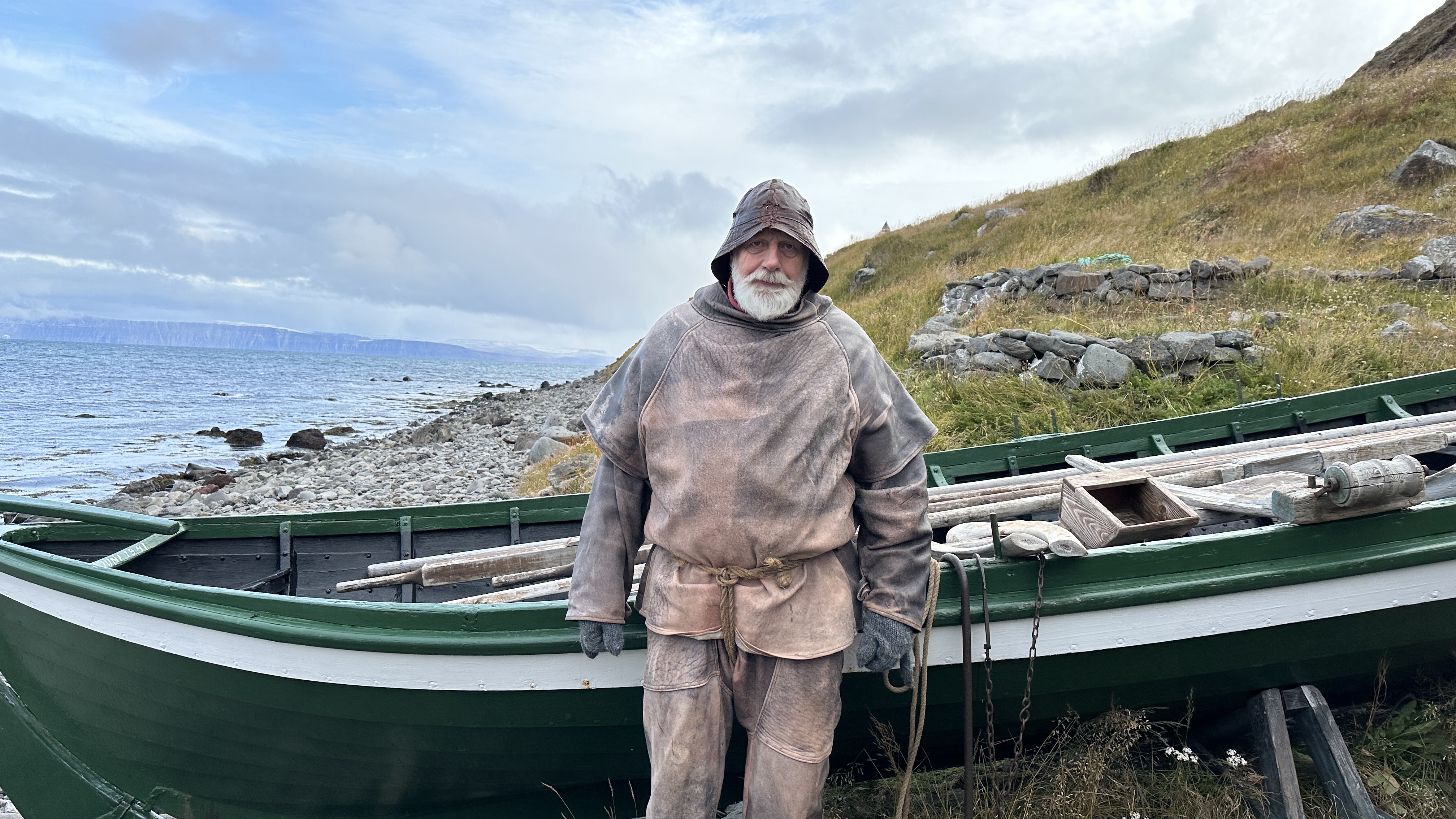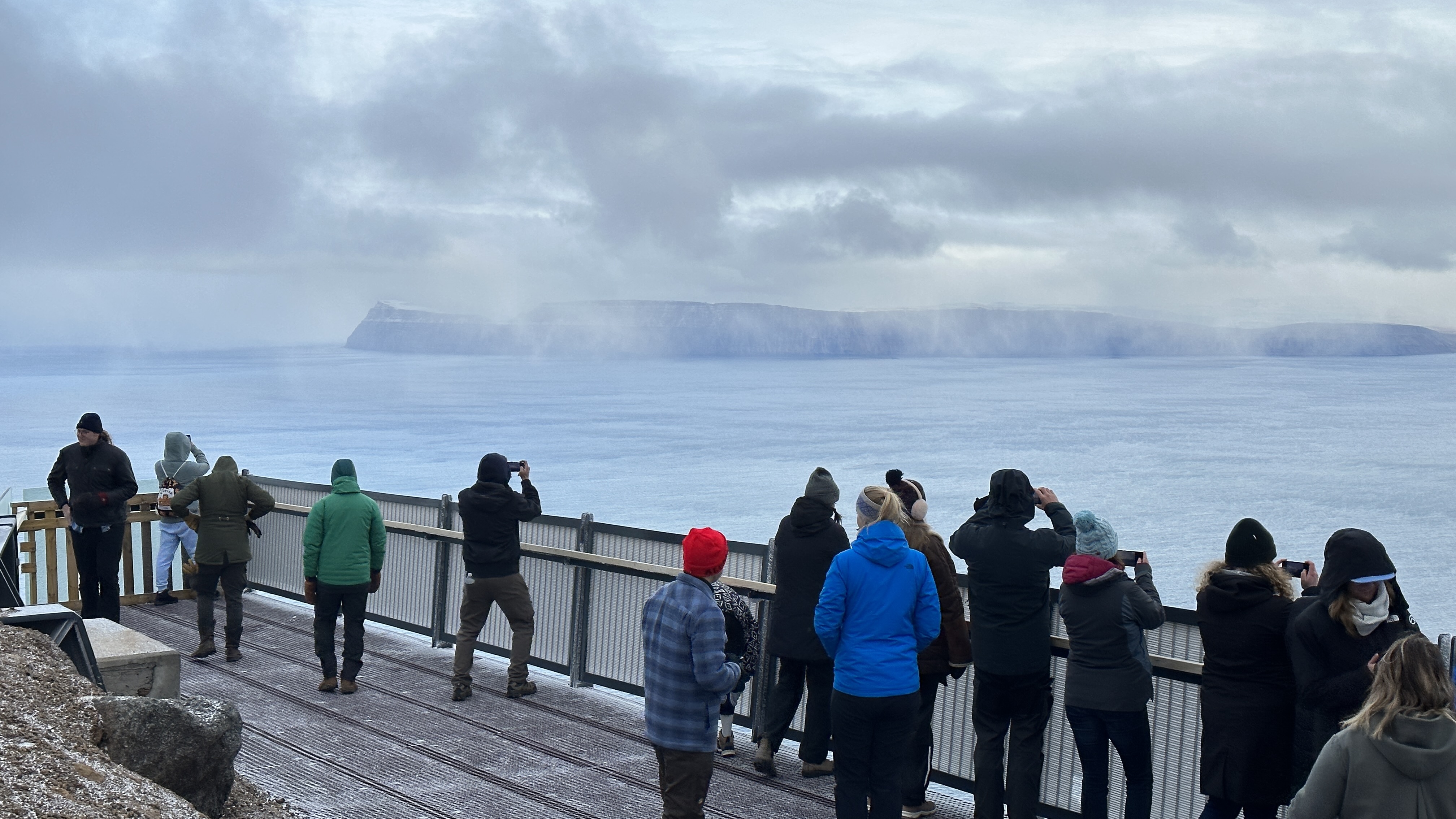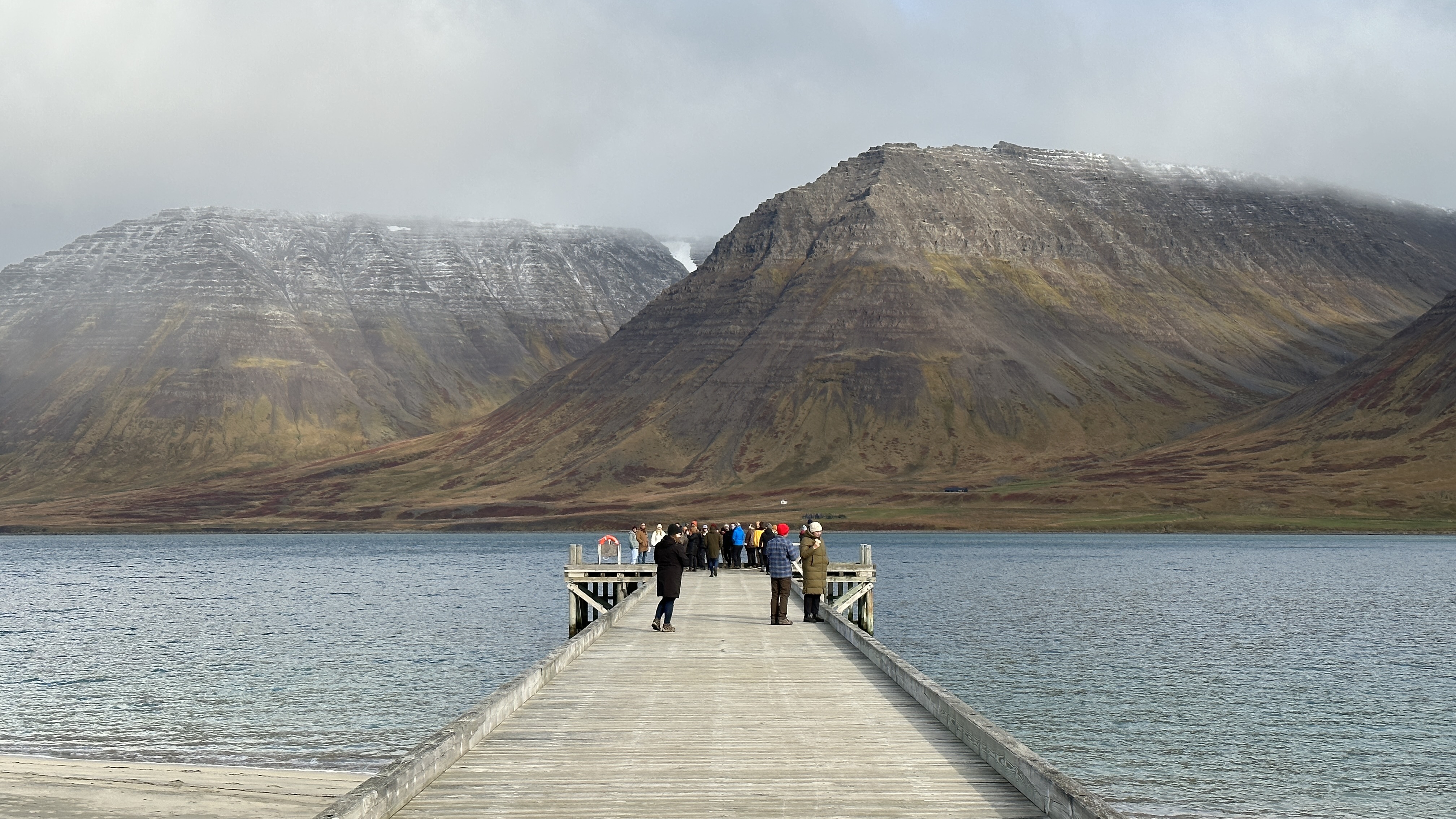Exploring Iceland‘s Coastal Future
Students from the University Centre of the Westfjords recently went on a field trip to picturesque locations near Ísafjörður. The student group was a combination of two courses taught in two different master‘s programs. One of them was „People and the sea: Geographical perspectives” which focuses on understanding the connection between people and the ocean with terms from geography. The other was "Coastal and Marine Management: Theory and Tools", where students learn about theories, policy making, legalization and tools in marine and coastal management. Since the two courses touch on similar topics it was a perfect opportunity for a joint field trip.
The group started in Ósvör, the maritime museum which is a replica of an old Icelandic fishing station from the 19th century and stands on the east side of Bolungarvík. There they met Jóhann Hannibalsson, the museum curator, dressed in old fisherman clothes made out of leather. Jóhann taught students about the museum and the history of seafaring in the area. "The purpose of going to Ósvör was to let students get a sense of the history of the coastal communities in Iceland, the importance of fishing and how long fishing has been part of these areas“ says Brack Hale, academic director of Coastal Marine Management. He says it is important for students to understand that even though Ósvör is in some ways a remote place today, that was not the case when everything was just connected by sea, when you got between places by sailing. Ósvör was an important place to come to because it is where the fish were. Matthias Kokorsch, academic director of Coastal Communities and Regional Development adds that remoteness, proximity and location regarding resources from the sea has been a common topic in the classroom.

Next on the agenda was to drive to the top of the mountain Bolafjall but when the group arrived, the fog had taken over. The view was limited in the beginning and the teachers of the two courses gave a lecture for the students about the radar station on top of the mountain and its importance in the Cold War. The lecture was interrupted by sudden snowfall to the surprise of many students but soon the fog cleared away and gave way to a beautiful panoramic view of the ocean and the surrounding fjords. "From mountain Bolafjall you get a great view of Ísafjarðardjúp and Hornstrandir nature reserve and you get a sense of where you are and the different types of environment in the coastal region" says Brack Hale. The students also received a map of the area marked with future locations for fish farms and discussed the interaction of aquaculture and nature, especially in relation to the Hornstrandir nature reserve.


Finally, the group arrived in Holtsfjara in Önundarfjörður where students were given a lecture about the area and the bird life found there. Recent plans for building luxury hotels and sea baths on the beach were discussed and how it could affect nearby nature. Matthias Kokorsch mentions that the area is interesting because there are so many different stakeholders in a small area. For example, interests are different depending on whether it is the Eider duck farmer, the construction of luxury hotels or for locals to experience untouched nature. He also mentions the importance of showing students the areas they talk about in class so that they get a sense of the places in question.


Outdoor teaching, company visits and field trips are common in courses taught at the University Centre of the Westfjords. All master's level courses at the University Centre of the Westfjords are open to participants from other universities and the world of work. All teaching takes place in English, as the student group is usually international and teachers come from all over the world. Courses fulfil the criteria of several trades unions for educational grants, they are multidisciplinary and can be of interest to individuals with diverse backgrounds and from different lines of work.
